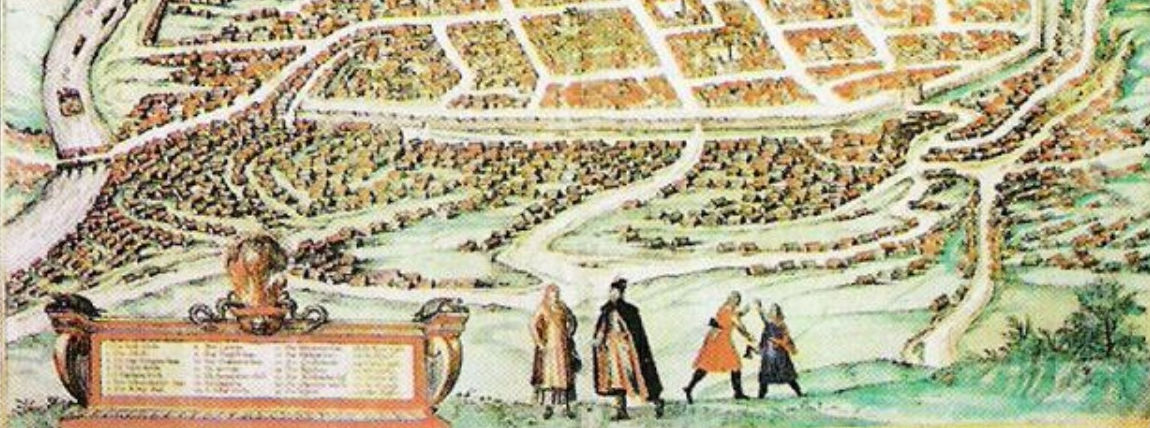Latheran Canons’ Monastery
Gardens at the former Latheran Canons’ Monastery in Antakalnis. At the end of the 17th c. a garden was set up at the Pacų Palace which was later on together with the palace handed over to the Latheran Canons’ Monastery. In the 2nd quarter of the 18thh c. a regularly landscaped garden bordering the monastery yard was spreading east of St. Peter and Paul’s Church and the monastery.
At the end of the 18th c. the garden was developing northwards along Antakalnio street. It was prolong and landscaped a strict and regular manner. Its central alley parallel to the street was intersected by perpendicular paths with an oval square with a pool displayed at the intersection of the alley and central path. In the 2nd quarter of the 19th c. the garden was landscaped more pictorially with some of the paths acquiring a curved shape. The garden had pyramid poplars planted in rows, quite a few of which survived by the church into the end of the 19th c. With the expansion of Vilnius and rapid urban development of Antakalnis in mid 19th c., the park deteriorated.
![]()
"Chinese and Tivoli Gardens"
Chinese and Tivoli Gardens in Antakalnis. The Chinese garden was set up by a small palace built in mid 18th c. Northwest of St. Peter and Paul’s church (today’s British Embassy). This oblong garden spread from the bank of River Neris. During the same period another – much larger – Tivoli garden was set up north of St. Peter and Paul’s church (at today’s 6-8 Antakalnio street).At the end of the 18th c. and at the beginning of the 19th c. – during the heyday of both parks – they were landscaped in regular manner with straight parallel and perpendicular paths. In the 2nd quarter of the 19th c. the layout of these gardens was converted into pictorial. A pond with an island and surrounded by a curvy path was built in the Chinese Garden. The landscaping of this garden displayed elements characteristic to the Chinese garden art very fashionable at the time in Europe, which justifies its name. For instance, The Chinese garden had the famous Bohl restaurant. The palace of Tivoli gardens also had a restaurant surrounded by Tivoli lilac bushes (hence the name of the garden) and flower beds. Music was played in the garden in the summertime. In the 1st half of the 19th c. both gardens were much visited. A lot of congregations and parties took place there where a regular guest was poet A.Mickevičius (Adam Mickiewicz). The heyday, however, was short, and ended in mid 19th c. Only separate tree groups survived in the place of former splendid gardens.








